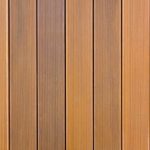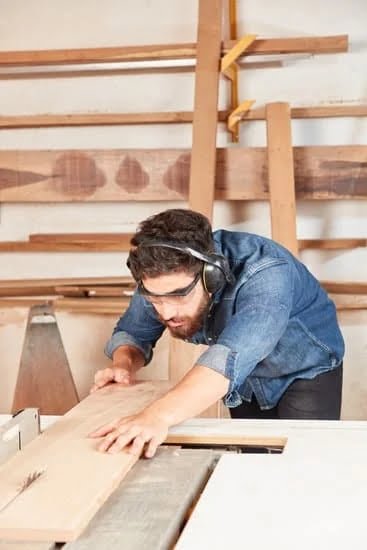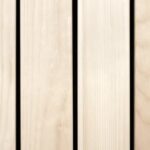Are you looking to expand the seating capacity of your dining table for those special gatherings and family meals? If so, can you have a woodworker make an extra leaf for your table? Adding an additional leaf to your table can provide the flexibility needed to accommodate more guests without compromising on style or functionality.
Having an extra leaf in your table allows you to easily extend its surface area when needed, providing a convenient solution for larger gatherings or dinner parties. This simple addition can transform your table into a versatile piece of furniture that can adapt to different occasions and seating requirements.
Finding the right woodworker for this job is crucial to ensure that the extra leaf seamlessly integrates with the design and structure of your existing table. With the expertise and craftsmanship of a skilled woodworker, you can rest assured that the extra leaf will be crafted with precision and attention to detail, enhancing both the aesthetic appeal and functionality of your table.
Benefits of Adding an Extra Leaf to Your Table
Adding an extra leaf to your table can bring numerous benefits and enhance the functionality of your furniture piece. Whether you frequently host dinner parties or have a growing family, having the option to expand your table can be invaluable. Here are some of the key advantages of adding an extra leaf to your table:
Increased Seating Capacity
One of the primary benefits of having an extra leaf in your table is the ability to accommodate more guests comfortably. With a larger surface area, you can easily seat additional people without compromising on elbow room or comfort. This flexibility is especially useful during gatherings and celebrations when you need to maximize seating space.
Versatility in Table Size
Another advantage of adding an extra leaf to your table is the versatility it provides in terms of size. You can adjust the length or width of your table based on your specific needs at any given time. This flexibility allows you to customize your dining experience, whether you are enjoying a cozy meal with your immediate family or hosting a larger group for a special occasion.
Enhanced Aesthetic Appeal
Incorporating an extra leaf into your table not only adds functionality but also enhances the visual appeal of the piece. The seamless integration of the extra leaf ensures that it blends harmoniously with the existing design, creating a cohesive look that complements your interior décor. Additionally, you can choose from a variety of materials and finishes for the extra leaf to match your personal style and preferences.
Finding the Right Woodworker for the Job
Finding the right woodworker to make an extra leaf for your table is crucial in ensuring a high-quality and seamless addition to your furniture. When seeking out a skilled professional for this task, there are several key factors to consider.
Experience and Expertise
When looking for a woodworker to create an extra leaf for your table, it is essential to choose someone with experience in crafting furniture pieces. A skilled woodworker will have the knowledge and expertise needed to understand the intricacies of your table’s design and ensure that the additional leaf seamlessly blends in with the existing structure.
Portfolio and References
Before enlisting the services of a woodworker, it is advisable to review their portfolio of past projects. This will give you an idea of their craftsmanship and style, allowing you to assess whether they are capable of meeting your expectations. Additionally, asking for references from previous clients can provide valuable insight into the woodworker’s professionalism and reliability.
Communication and Collaboration
Effective communication between you and the woodworker is key to achieving the desired outcome for your table. Make sure to clearly communicate your needs, preferences, and any specific design requirements you have in mind. A good woodworker should be attentive to your input and willing to collaborate with you throughout the process to ensure that the final product meets your specifications.
Design Considerations for the Extra Leaf
When considering adding an extra leaf to your table, it is essential to take into account the design aspects to ensure that the end result complements your existing furniture and style. Here are some key design considerations to keep in mind:
- Size and Shape: The added leaf should seamlessly blend with the original table design in terms of size and shape. It should not look out of place or disrupt the overall aesthetic appeal.
- Finish and Color: Choose a finish and color for the new leaf that matches the existing table as closely as possible. This will help maintain a cohesive look and prevent it from standing out in a jarring manner.
- Style: Consider the style of your table when designing the extra leaf. Whether your table is contemporary, traditional, rustic, or modern, the additional leaf should complement this style harmoniously.
Here are some more considerations you can keep in mind when working with a woodworker to create an extra leaf for your table:
- Ensure that the wood used for the extra leaf matches the type of wood used in your current table.
- Discuss any specific design preferences or customizations you may want for the new leaf.
- Make sure to get accurate measurements of your table before proceeding with creating the additional piece.
By paying attention to these elements during the design process, you can ensure that your table with an extra leaf not only provides functionality but also enhances the overall look and feel of your dining area.
Materials Needed for the Project
When considering adding an extra leaf to your table, it is important to gather all the necessary materials for the project. The primary material needed for this project is, of course, the wood that will be used to create the leaf. It is crucial to choose a wood type that matches the existing table seamlessly in terms of color and grain pattern. This will ensure a cohesive look once the extra leaf is added.
In addition to the wood, you will also need tools such as a saw, sander, measuring tape, and wood glue. These tools are essential for cutting and shaping the wood to fit perfectly with your table. Depending on the design considerations discussed earlier, you may also require specific hardware such as hinges or braces to attach the extra leaf securely.
Furthermore, don’t forget about finishing materials like wood stain or varnish to protect the newly added leaf and make it blend harmoniously with the rest of your table. By having all these materials ready before starting the project, you can ensure a smooth process and achieve a professional-looking result that enhances both the functionality and aesthetic appeal of your table.
Steps Involved in Making an Extra Leaf for Your Table
Adding an extra leaf to your table can provide additional seating space for guests and allow for more flexibility in your dining area. Whether you have a small dining room or frequently host gatherings, having an extra leaf can make a significant difference in the functionality of your table. Here are the steps involved in making an extra leaf for your table:
1. Measure and Determine Size: The first step in adding an extra leaf to your table is to measure the dimensions of your current table. This includes the length, width, and thickness of the existing tabletop. Once you have these measurements, you can determine how large the extra leaf needs to be to seamlessly fit with your table.
2. Selecting the Right Wood: Choosing the right type of wood for your extra leaf is crucial in ensuring its durability and longevity. Consider selecting a wood species that matches the existing table or complements it well. Popular choices include oak, maple, cherry, or walnut, depending on your preferences and budget.
3. Cutting and Finishing: Once you have selected the wood for your extra leaf, it’s time to cut it to size using woodworking tools such as a saw or router. Ensure that the edges are smooth and match the finish of your existing tabletop. You may also need to stain or seal the wood to protect it from moisture and wear over time.
By following these steps and working with a skilled woodworker, you can have a custom-made extra leaf that seamlessly integrates with your table, providing added versatility for all your dining needs. Whether you need a temporary solution for occasional gatherings or want a permanent extension for everyday use, adding an extra leaf can enhance both the aesthetic appeal and functional value of your dining space.
Cost Considerations for Hiring a Woodworker
When considering hiring a woodworker to make an extra leaf for your table, one of the primary factors you need to keep in mind is the cost involved. The price can vary depending on various factors such as the size of the table, the type of wood used, and the design complexity of the extra leaf. It is essential to discuss your budget with the woodworker upfront to ensure that both parties are on the same page regarding pricing.
Another cost consideration when hiring a woodworker is their level of expertise and experience. More experienced woodworkers may charge higher rates for their services but may also deliver better quality work. It is recommended to ask for quotes from different woodworkers and compare their prices, ensuring that you find a balance between cost and quality for making an extra leaf for your table.
In addition to labor costs, you should also factor in any additional materials needed for creating the extra leaf. This includes the cost of the wood itself, any finishing materials, and any special hardware required for attaching the leaf to your table. Discuss these material costs with your chosen woodworker so that there are no surprises when it comes time to pay for the completed project.
| Cost Considerations | Factors |
|---|---|
| Labor Costs | Expertise and Experience of Woodworker |
| Material Costs | Wood, Finishing Materials, Hardware |
Maintenance Tips for Your Table With an Extra Leaf
Maintaining your table with an extra leaf is crucial to ensure its longevity and functionality. One of the key maintenance tips is to regularly clean the entire surface of the table, including the extra leaf, with a mild soap and water solution. Avoid using harsh chemicals or abrasive cleaners that can damage the wood finish. Additionally, make sure to dry the table thoroughly after cleaning to prevent any moisture-related issues.
Another important aspect of maintaining your table with an extra leaf is to regularly inspect for any signs of wear and tear, such as loose screws or hinges. Tighten any loose hardware promptly to prevent further damage. It is also recommended to periodically wax or polish the table surface, including the extra leaf, to protect the wood and maintain its luster.
Proper storage of the extra leaf when not in use is also essential for its preservation. Store it in a cool, dry place away from direct sunlight to prevent warping or discoloration. If possible, cover the extra leaf with a cloth or protective covering to shield it from dust and debris. By following these maintenance tips, you can ensure that your table with an extra leaf remains in top condition for years to come.
| Maintenance Tip | Description |
|---|---|
| Cleaning | Regularly clean with mild soap and water, avoiding harsh chemicals. |
| Inspection | Check for wear and tear, tighten loose hardware, and wax/polish periodically. |
| Storage | Store extra leaf in a cool, dry place away from sunlight; cover with protective cloth. |
Conclusion
In conclusion, having an extra leaf added to your table can greatly enhance its functionality and versatility. Whether you frequently host dinner parties or simply need more space for everyday use, the additional leaf can provide the flexibility you need to accommodate various occasions and gatherings. By working with a skilled woodworker, you can ensure that the extra leaf seamlessly blends with the design of your table, creating a cohesive and stylish piece of furniture.
Finding the right woodworker for the job is essential in ensuring that your extra leaf is of high quality and durable. Look for craftsmen who have experience working with different types of wood and have a strong attention to detail.
Discussing design considerations with the woodworker will also help in achieving the desired look for your table. From matching the stain color to choosing a complementary wood grain, these details can make a significant difference in the overall appearance of your table.
Lastly, maintaining your table with an extra leaf is crucial in prolonging its lifespan and preserving its beauty. Regular cleaning and polishing will help prevent scratches and damage, while storing the extra leaf properly when not in use will protect it from wear and tear. With proper care, your table with an extra leaf can continue to serve you well for years to come, providing a functional and elegant focal point in your dining room or kitchen.
Frequently Asked Questions
Can You Add a Leaf to a Table?
Yes, adding a leaf to a table is a great way to increase its seating capacity when needed. By inserting an additional leaf into the center of the table, you can easily accommodate more people during gatherings or events.
How Do You Add a Drop Leaf to a Table?
Adding a drop leaf to a table typically involves unfolding or extending the leaf from the sides of the table. This type of leaf is hinged so that it can be dropped down when not in use, making it a convenient option for saving space in smaller rooms.
It’s a simple yet effective way to expand the surface area of your table.
How Many Leaves Can a Table Have?
The number of leaves that a table can have depends on its design and construction. Some tables come with multiple leaves that can be added or removed as needed, allowing for maximum flexibility in seating arrangements. Whether it’s one, two, or even more leaves, each one adds versatility and functionality to the table.

Hi everyone! I’m a woodworker and blogger, and this is my woodworking blog. In my blog, I share tips and tricks for woodworkers of all skill levels, as well as project ideas that you can try yourself.





